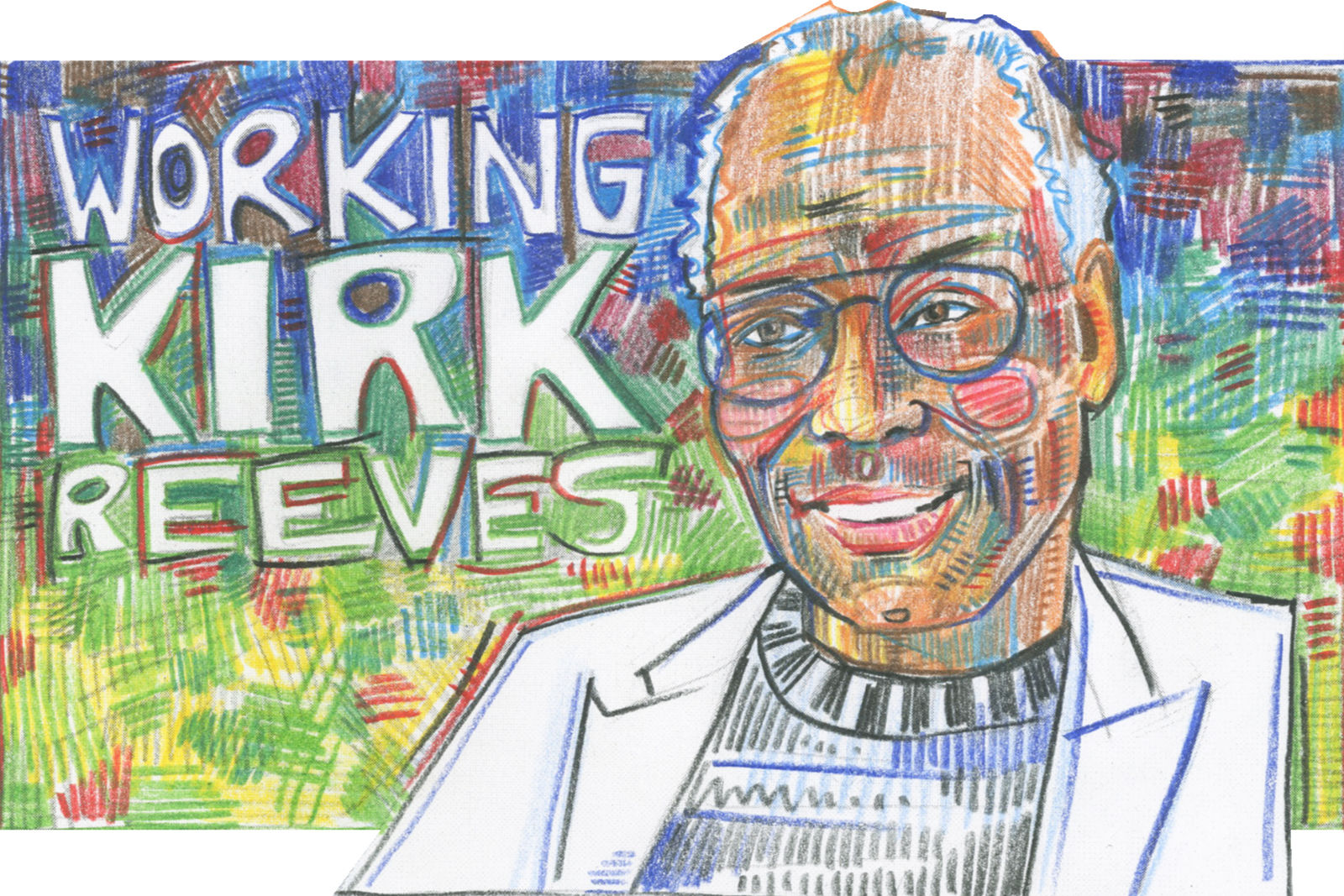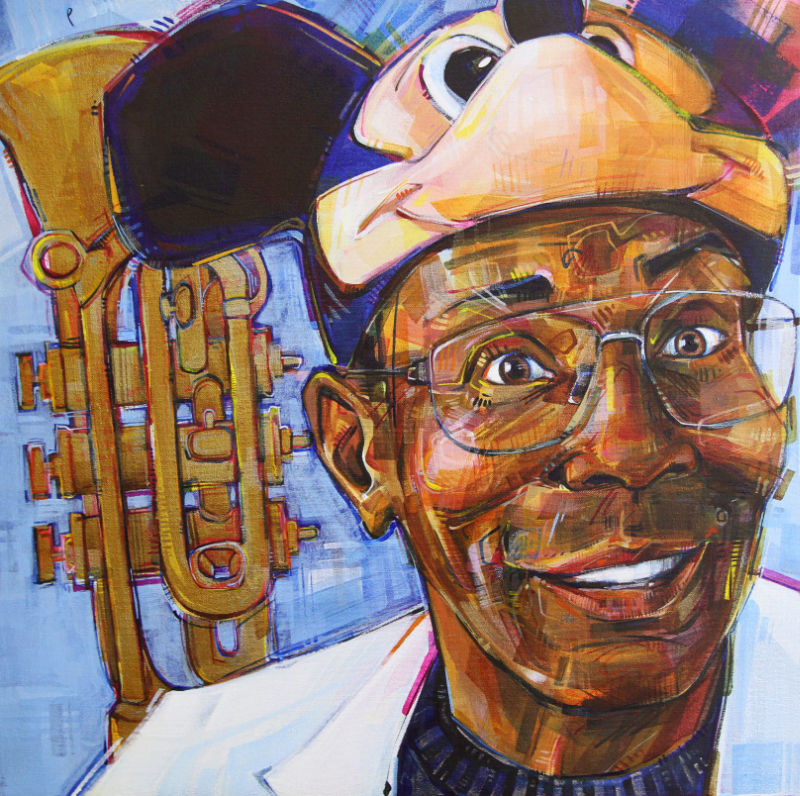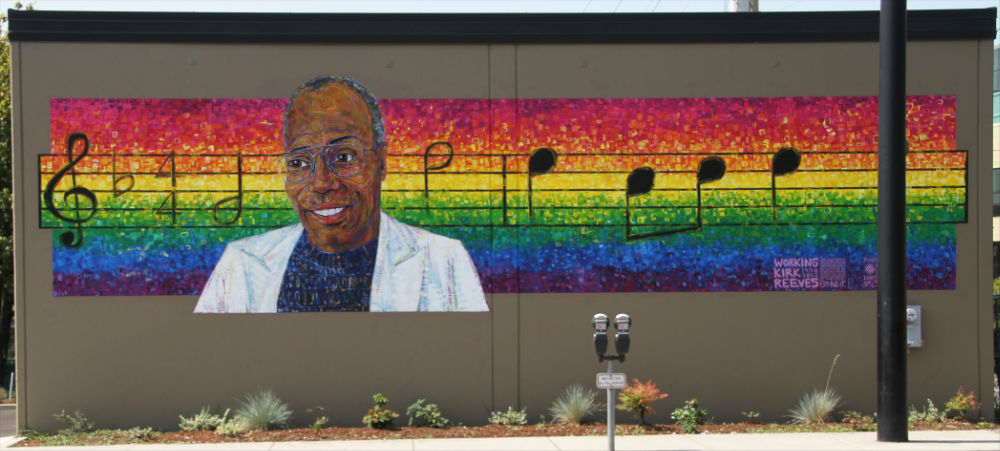Blog / 2014 / When the Regional Arts and Culture Council Lied
September 24, 2014
Over the last year and some, the City of Portland pressured me to break the law repeatedly. I’ve talked about it before on my blog—here and here among other places—but I’m going to speak more openly about my disappointment today because this article in the Willamette Week gives me more to be disappointed about.
The backstory, in brief, is as follows:
As I worked on negotiations and preparations for the Kirk Reeves mural, I was asked by the Regional Arts and Culture Council to break the law and infringe on Disney’s copyright by painting Kirk wearing a Mickey Mouse ear hat. In an email, I told the RACC I’d only break the law if it had my back, but it refused to stand by me, while also continuing to pressure me to break the law in emails of its own.
Despite this, I still wanted to believe that the RACC was trying to do the right thing, so I met with a couple of its employees last February and, more recently, I emailed a number of them. I was trying to get them to educate themselves and Portland artists about copyright law, about how it’s bad for artists, and about the alternatives to copyright. At first, they did not respond to my emails at all, but then the answer came in two parts:
- The RACC employee who’d encouraged me to break copyright law again and again was quoted in this Willamette Week article as supporting copyright law.
- The RACC director sent me a we’re-sorry-you-feel-that-way apology. She wrote: “we never intended to urge you to break the law. I can see how you might have perceived the conversation that way, but I am sorry that you did.”
After the first response I approached the Willamette Week to tell my story, and after the second one I felt like I should have spoken to the press a lot earlier.
And it gets worse.
When the RACC responded to the Willamette Week about the Kirk Reeves mural, it lied and said that it was me who wanted the Mickey Mouse ear hat, not the City’s mural committee and later the RACC employee assigned to my project.
In its article today, the Willamette Week chose not to call the RACC out for its misrepresentation of events, even though it’s easy enough to prove the lie. All you have to do is look at the original application for the mural. It includes this drawing, which does not feature the troublesome ears.

The RACC’s lie about whose idea it was to infringe on Disney’s copyright doesn’t absolve them of all badness in the resulting article in the Willamette Week, but it muddies the situation enough that its behavior seem less weird and less irresponsible.
And that means that the RACC wins. They get to continue to publicly be an institution that many Portlanders love, and I get to be the artist who complains about opportunities given to me. It’s not a role I relish, but, if it’s what the RACC wants, then I’ll do a knock-out performance.

The Note Is the Winding Path It Takes (Kirk Reeves)
2007
acrylic on canvas
24 x 24 inches
When I painted Kirk with his Mickey hat in this 2007 small stretched-canvas portrait, I was comfortable doing so because I know how studio art works. If I didn’t want to paint the hat in the mural, it’s because I was a public art newbie and there were so many factors I didn’t understand:
- What if Disney sued?
- Would the City pay me to paint out the ears or would that be on my dime?
- What if I refused to paint them out?
- What kind of pressure could or would the City put on me then?
- What would the building’s owner do?
- What if he were sued and then he decided to sue me too?
- And would I even be able to interrupt whatever business was going on in the building to do the paint-over?
With all these variables, I said “no” to breaking the law unless the City was on my side.
And by saying “no” I was making a decision for my business, in exactly the way one does when one is an adult who’s been making her living as an artist for over a decade. Still, the RACC questioned that decision again and again even though it is not my lawyer. The RACC did this either because it does not view artists as legitimate business people or because the RACC thinks artists should be grateful for any opportunities they get and never question whether what they’re being asked to do is ultimately good for them or not. Neither of those possible motives bode well for the RACC or for Portland artists.
The fact is that, if the RACC had simply accepted the decision I made, I’d still be the vocal supporter of the RACC that I was before all this, and we’d all be doing something else right now. But the RACC didn’t respect my decision and then it lied about how this issue came about.

Somewhere over the Rainbow (Kirk Reeves)
2014
acrylic mural
10 x 38 feet
I’ve learned a lot from the making of the Kirk Reeves mural, but the most important lesson is the one that the RACC and the Willamette Week just taught me.
People will lie to cover their butts. They will bully you without even realizing they’re doing so, and they’ll continue to bully you even when you ask them to stop. They will fail to recognize how much influence they have and, as a result, they will misuse that influence. But none of that can silence you unless you decide it should.
UPDATE
October 1, 2014
So that everyone can decide for themselves how they feel about what I did and what the RACC did in this situation, I published my relevant communication with the council in this article.
Maybe this post made you think of something you want to share with me? Or perhaps you have a question about my art? I’d love to hear from you!
To receive an email every time I publish a new article or video, sign up for my special mailing list.
If you enjoyed this post, Ko-fi allows you to donate. Every dollar you give is worth a bajillion to me!



